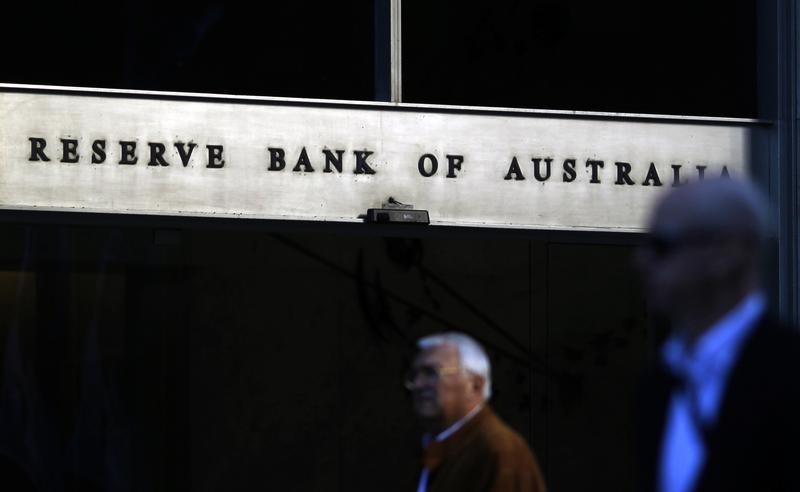By Wayne Cole and Swati Pandey
SYDNEY (Reuters) - Australia's central bank held interest rates for a 10th month on Tuesday, taking an optimistic tone on the economy even while acknowledging that growth likely slowed last quarter by more than it expected.
The Reserve Bank of Australia (RBA) kept rates at a record low 1.50 percent in a widely expected move after last easing in August of 2016.
It cited a stabilization in mining investment after years of steep falls, a rebound in the price of Australia's top exports of iron ore and coal, and the country's biggest-ever home building boom.
"Looking forward, economic growth is still expected to increase gradually over the next couple of years to a little above 3 percent," the RBA said in a statement.
That expression of confidence was enough to lift the Australian dollar <AUD=D4> closer to a 10-day high of $0.7500 touched on Monday.
Policy makers also played down the importance of first-quarter gross domestic product (GDP) figures due on Wednesday, which are likely to show the economy had barely grown.
"It's a pretty neutral statement from the RBA," said Tapas Strickland, economist at National Australia Bank.
"They are going to overlook the slowdown in GDP as a temporary blip. We think they will remain on hold until they see any signs of a pick up in the labor market."
The futures market <0#YIB:> implies only a one-in-five chance of a cut in cash rates by year end.
The RBA described the job market as "mixed" with stronger employment growth offset by softness in hours worked and high levels of underemployment.
Analysts forecast the economy expanded a meager 0.2 percent in the March quarter, a step back from the previous quarter's brisk 1.1 percent.
Growth for the year is seen slowing to around 1.6 percent, from 2.4 percent, the slowest since 2009.
DEFICIT SHRINKS
A big unknown is household consumption which surprised with its strength late in 2016, but is being burdened by record-low wage growth and high levels of mortgage debt.
Data out on Tuesday showed government spending had added only marginally to growth in the quarter, restrained in part by persistent budget deficits.
Also weighing on real growth was a drop in export volumes, while imports swung higher. As a result, net exports trimmed a larger-then-expected 0.7 percentage points from growth, leading some analysts to revise down their forecasts for GDP.
The country's current account deficit did narrow to its smallest in more than 15 years at A$3.1 billion ($2.31 billion), though that disappointed hopes for a rare surplus.
The main miss came from investment income with Australians earning less from their assets abroad.
Yet the figures from the Australian Bureau of Statistics showed a barnstorming performance by commodity exports which boosted the surplus on goods and services to A$9.0 billion.
That was easily the biggest surplus since the series began in 1959 and owed much to higher prices for iron ore and coal, though those have come off their peaks in the last month or so.
The sharp improvement in the country's perennial deficit with the rest of the world should make it less vulnerable to swings in investor sentiment.
It also lessens one threat to Australia's top credit rating, which has been under pressure from persistent budget shortfalls at home. Standard & Poors recently affirmed the rating at triple-A after spending months warning that a downgrade might be warranted.
